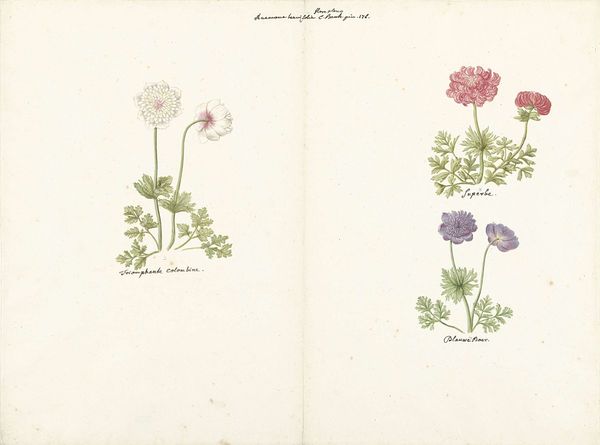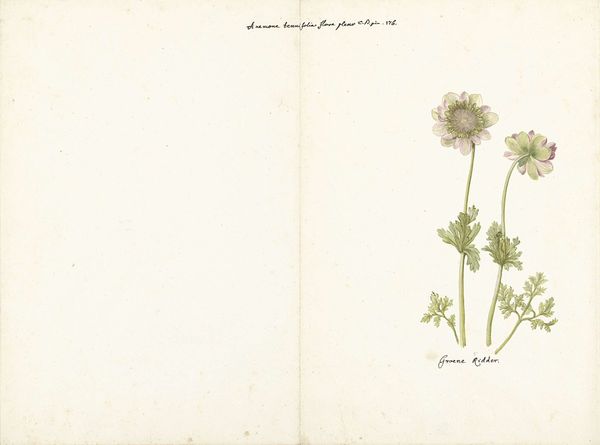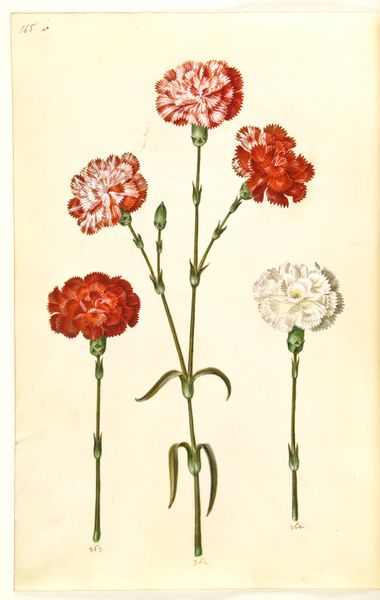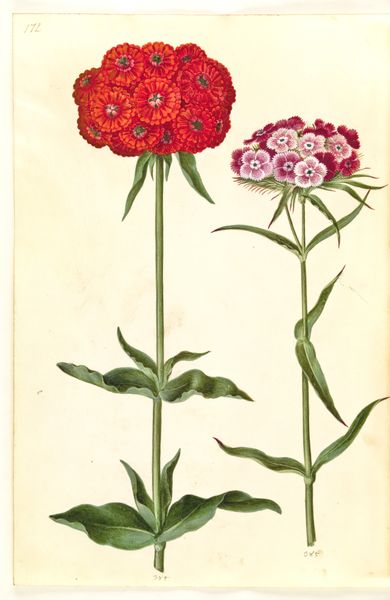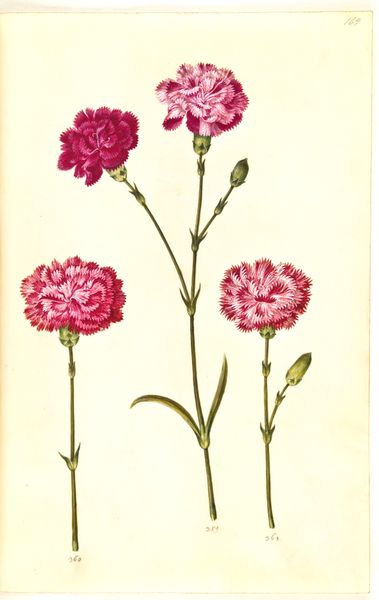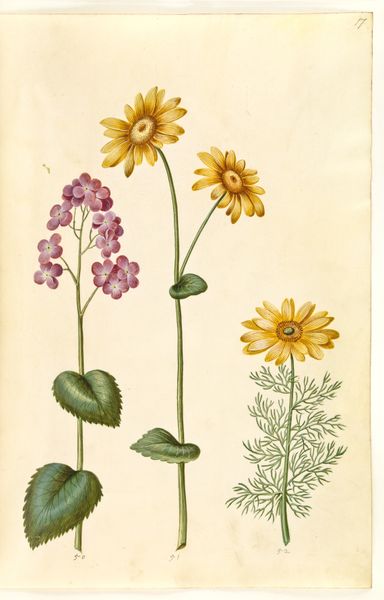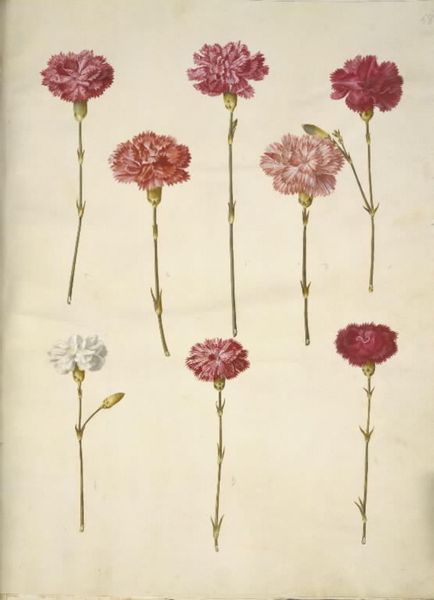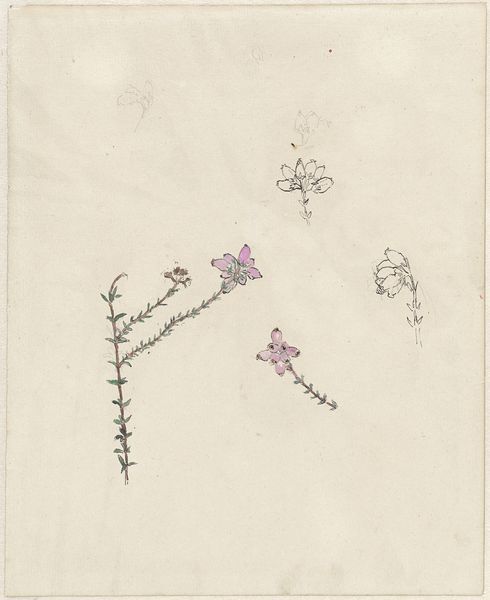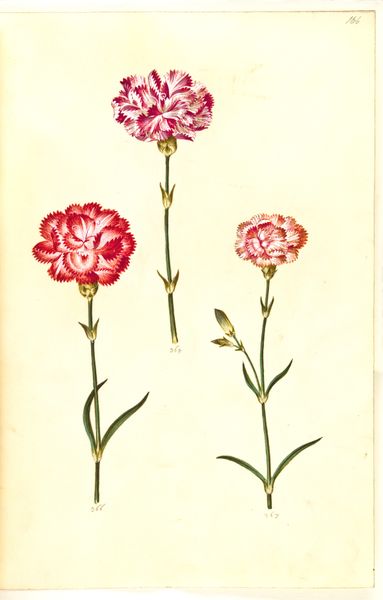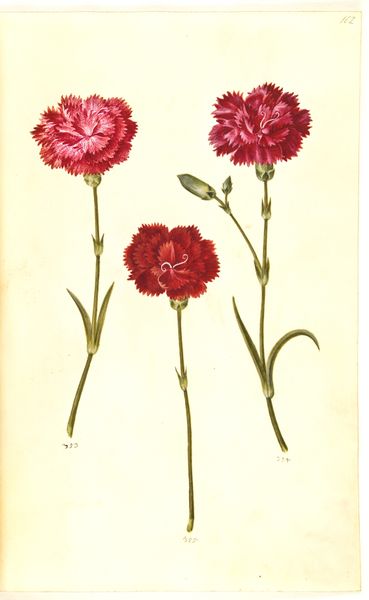
drawing, paper, watercolor, ink
#
drawing
#
paper
#
watercolor
#
ink
#
watercolour illustration
#
academic-art
Dimensions: height 455 mm, width 610 mm
Copyright: Rijks Museum: Open Domain
Curator: The delicacy is immediately striking; what do you see when you first view these anenomes? Editor: An incredible sense of lightness. The pale pink and green watercolors give a fragile quality to the plants; a whisper of life on paper. Curator: Indeed. We are looking at "Twee studies van anemonen," or "Two Studies of Anemones," dating back to the 1760s. Created by C. Baak, this artwork combines drawing, watercolor, and ink on paper. Considering the context of the Dutch Republic in the 18th century, it speaks to a period deeply invested in botanical illustration, scientific inquiry, and the careful cataloging of the natural world. Editor: Yes, botanical art served several purposes at the time, didn’t it? On the one hand, there was a booming ornamental horticulture craze, and also the ever-growing demands from the medicine sector. It also points to the increasing significance given to art as an academic discipline and the importance of these depictions in disseminating knowledge at the time. How are these species differentiated by social position? Curator: This gets at a point: artistic representations were crucial in shaping societal understanding of plants, and art thus played an undeniable role in influencing environmental policy. In terms of style, "Two Studies of Anemones" adopts academic-art and is deeply rooted in Enlightenment ideals of observation and classification, but its gentleness is especially compelling to me. It evokes themes around our own vulnerability, and perhaps even anxieties relating to global power imbalances. Editor: Interesting take. For me, there's a more straightforward tranquility; these plants are so simple in form. I admire its technical skill. It would be worthwhile researching what techniques and specific pigments were employed. The anemones on the sheet have been arranged meticulously. We need to look at the networks that these things were displayed at the time and what function they provided at institutions. Curator: Ultimately, it pushes us to acknowledge art as always working within social, cultural and political systems. Editor: Agreed. Thank you for that framing.
Comments
No comments
Be the first to comment and join the conversation on the ultimate creative platform.
